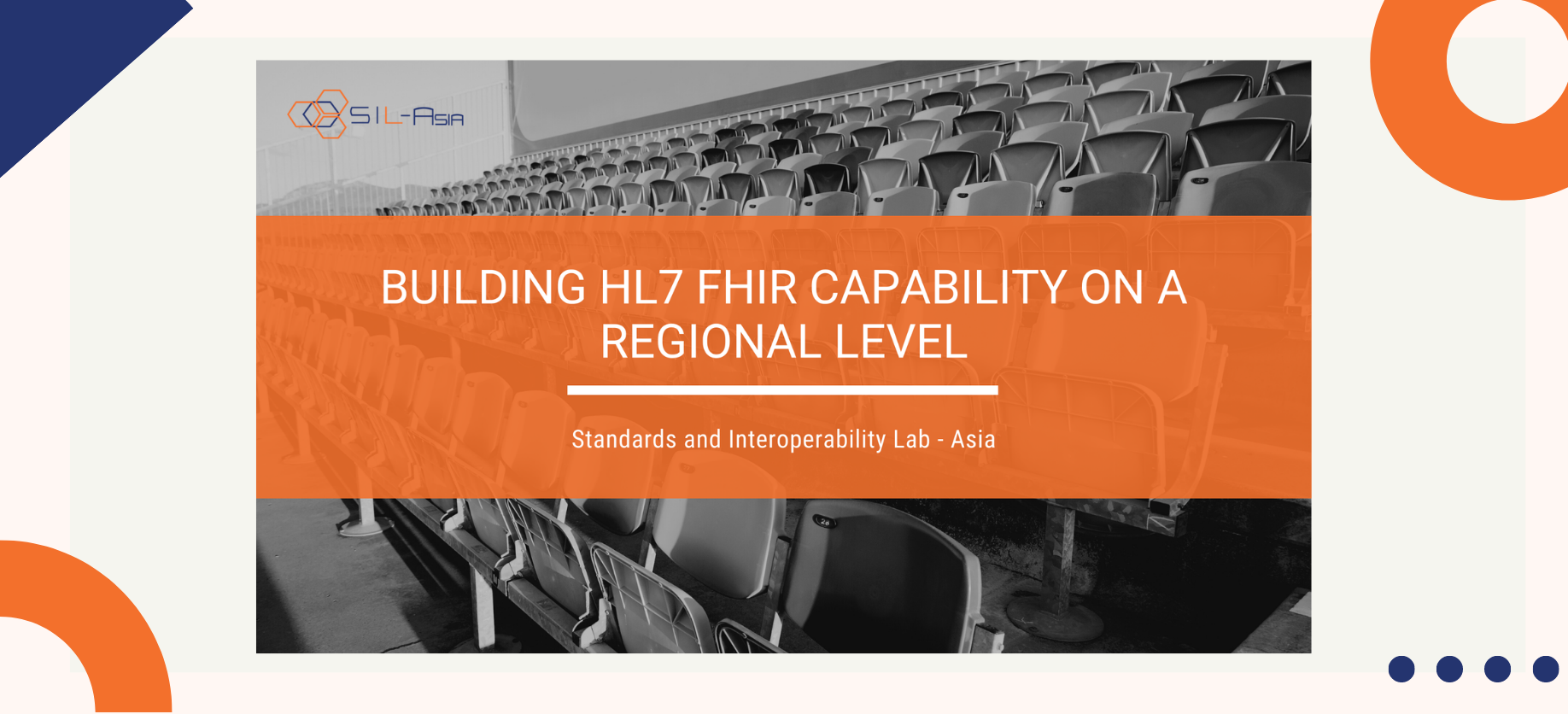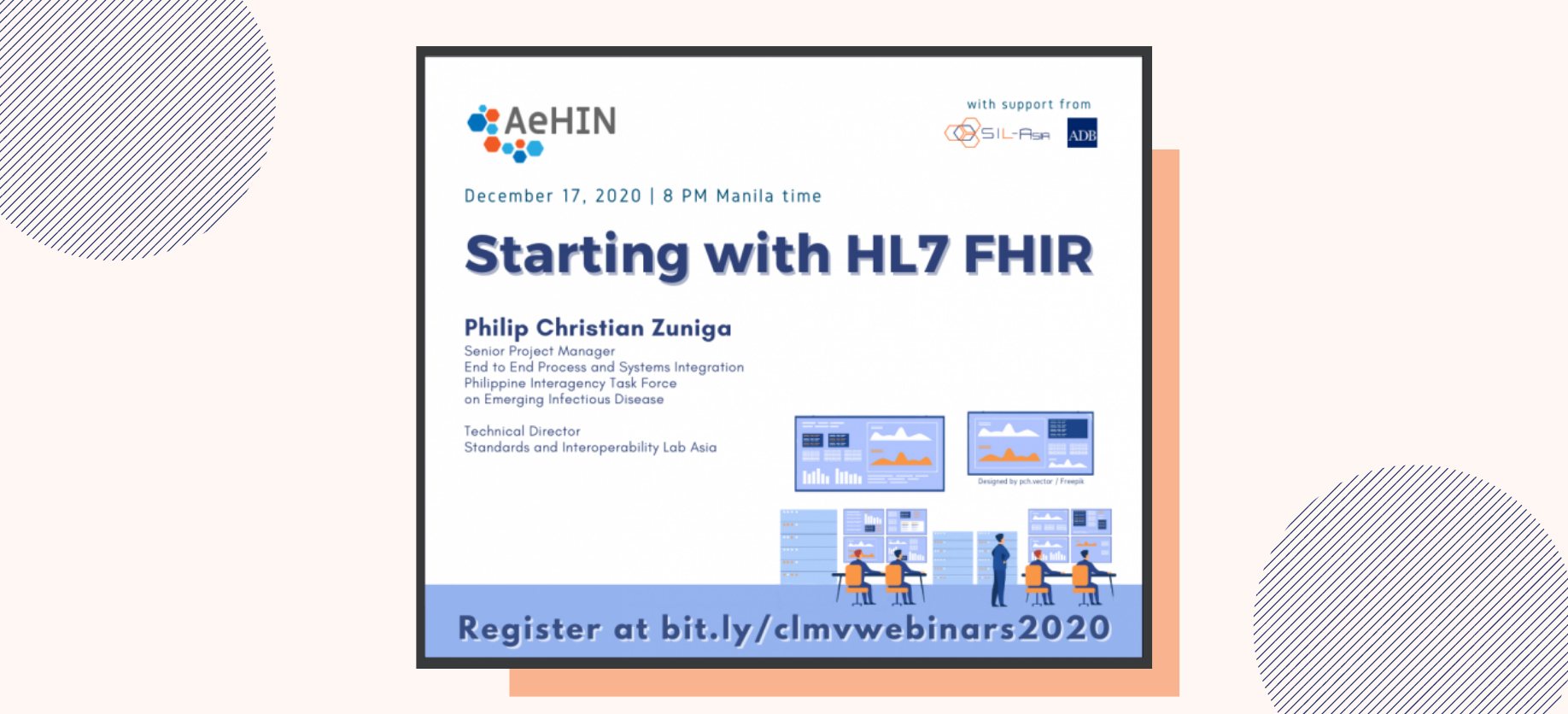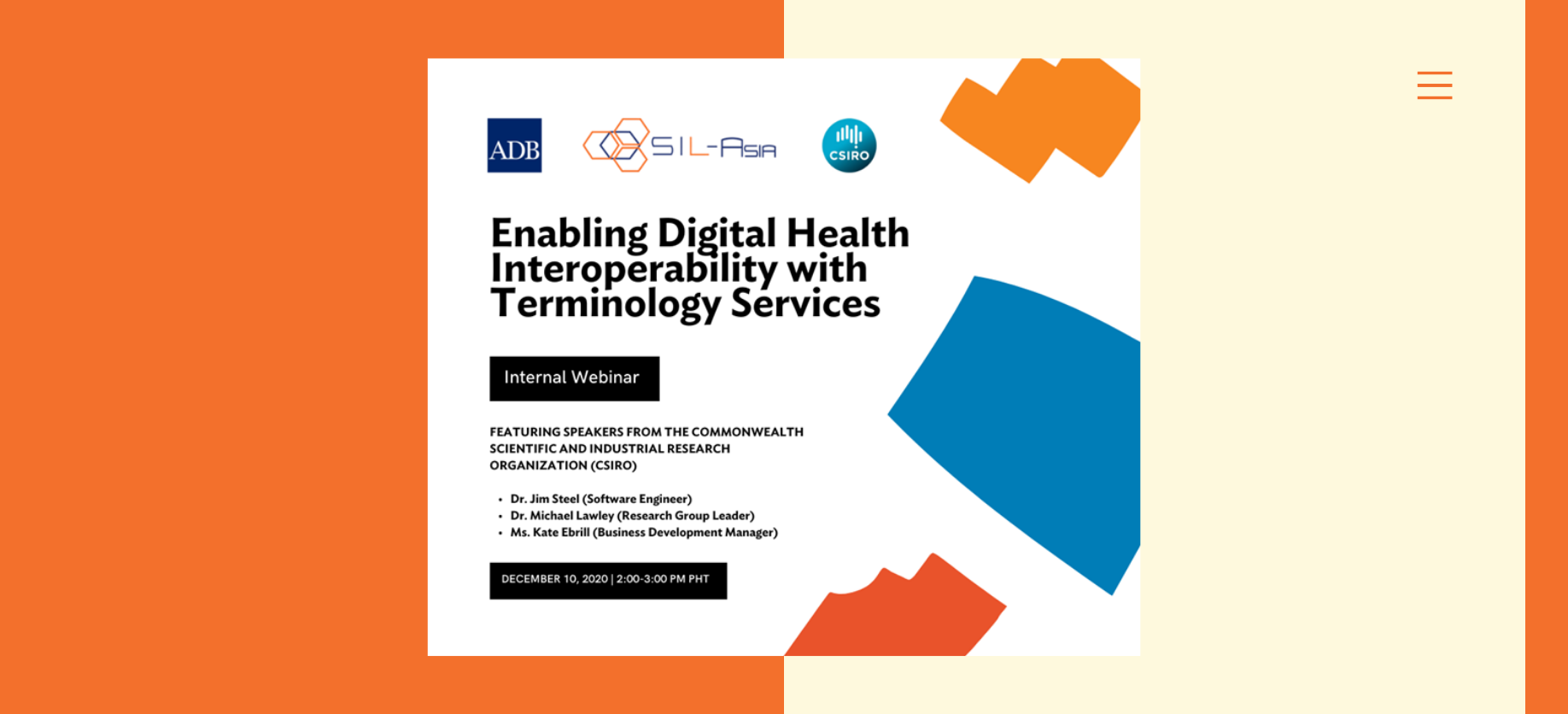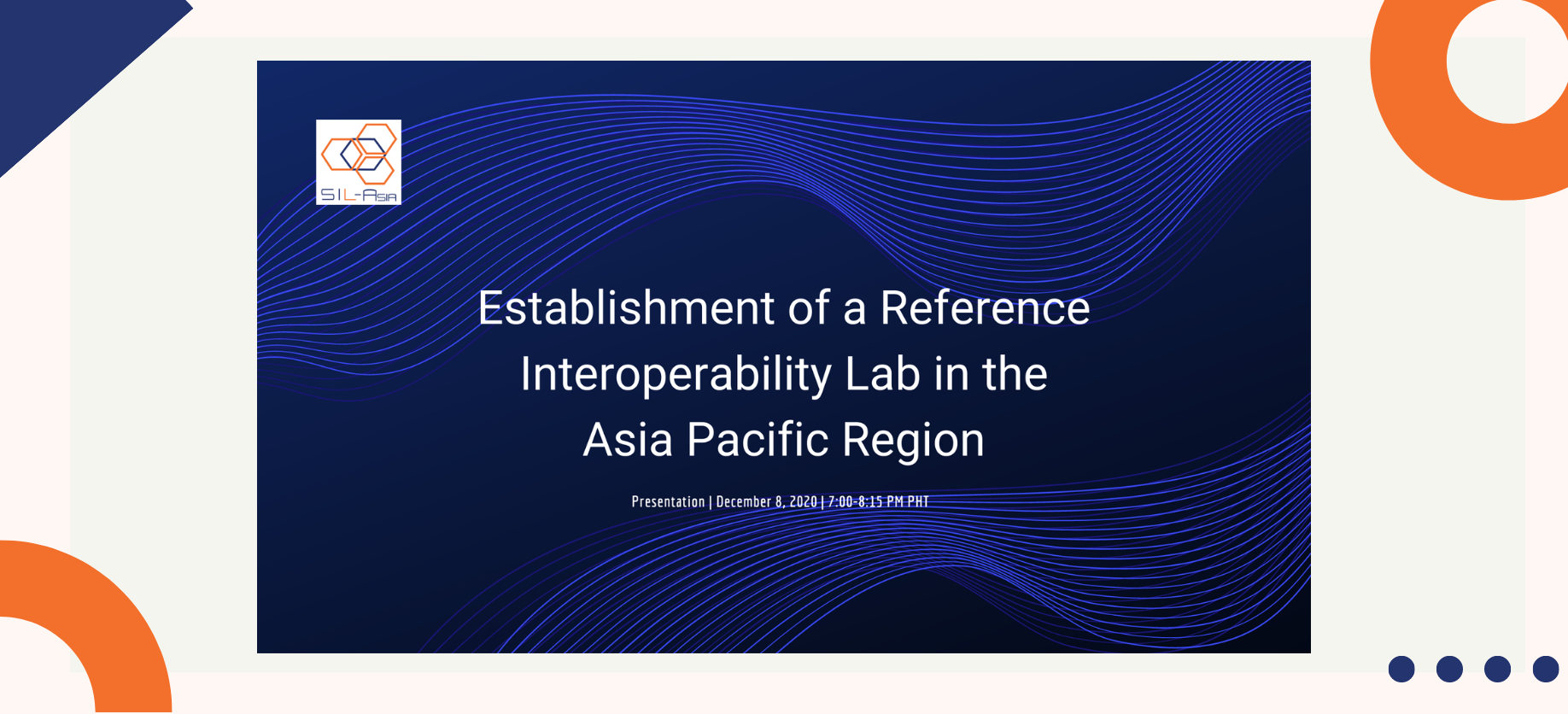VIRTUAL – The Standards and Interoperability Lab – Asia (SIL-Asia) facilitated a tutorial on ‘Building HL7-FHIR Capability on a Regional Level’ under the ‘FHIR Around the World’ track of FHIR DevDays 2020 last November 19, 2020.
FHIR DevDays is an event for IT professionals in healthcare, whether new to FHIR or with previous experience, to learn about HL7-FHIR in a collaborative environment. The event gave the participants an opportunity to work with the specification surrounded by others doing the same thing, side by side (virtually) with experts to answer any questions. The three pillars for DevDays are learn, code, and share.
In this tutorial, SIL-Asia discussed how countries can start developing capabilities on Health Level Seven International – Fast Healthcare Interoperability Resources (HL7-FHIR). The session introduced SIL-Asia’s HL7-FHIR starter toolkit, a repository of existing tools and guidance to help groups kickstart their FHIR-related initiatives and projects. The tutorial aimed to guide countries in developing a plan for HL7-FHIR adoption.
The tutorial also presented an HL7-FHIR curriculum that SIL-Asia has been using to organize regional and in-country capacity-building workshops. This includes the identification of key topics in designing a curriculum for an HL7-FHIR capacity-building workshop. In the design, it is highly important to localize HL7-FHIR learning materials. With this, SIL-Asia shared the best practices learned so far in their capacity-building efforts.
SIL-Asia is one of the partners of the recently conducted FHIR DevDays 2020. The virtual edition of DevDays was attended by 587 participants from 43 countries according to Firely.
To learn more about HL7-FHIR initiatives in Asia, visit this blog on the ‘Growth of Interoperability Labs in the Asia Pacific Region.’
The concept for the Standards and Interoperability Lab – Asia was first conceived at the Regional Interoperability Workshop organized by AeHIN in Manila last August 2015 at the sidelines of the Global Health Research Forum. The regional lab was designed to serve as a template of labs in each country that will later form into the Community of Interoperability Labs (COIL).






